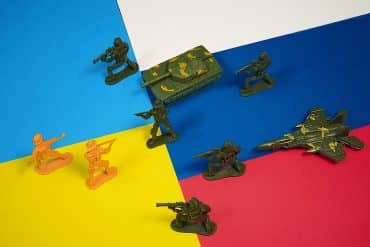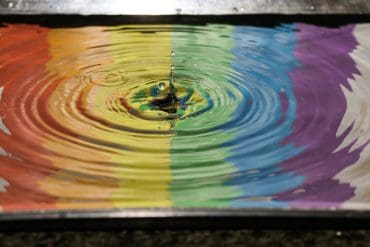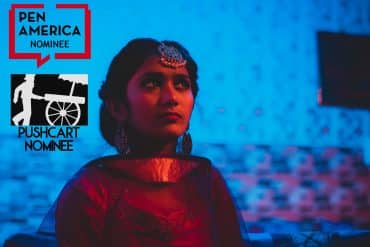AUTHOR’S MEMO
In part 2 of my column, “¡Aguacate! Bringing Up Bebe Bilingüe,” I use autoethnography as a writing approach to capture and represent my personal experiences as both a language learner and a qualitative researcher who has become the researched. Choi (2016), invoking Judith Butler (2003), claimed that autoethnographies are stories that begin in the middle. For me, this story began with Alarii’s grito, “Aguacate!” And I wondered, how did we all end up here? And because I write as this is happening, I’m also unsure exactly where to begin, and I have no idea as to how it will end. Anzaldúa (1987) resonated with this in-betweenness in another way. Nepantla, she called it. Emerging from Nahua ideology and language, she claimed that Nepantla was both a literal and metaphorical place of betweenness. It is a fruitful place of tensions, pulls and pushes, callings and answerings. A place where new things form. Somehow becoming bilingual and raising a bebe bilingüe, all during a pandemic became a Nepantla place for me. Unsure of what would happen next and when and how this would end, I decided to write through it.
In search of a structure, I focused on reflecting on and narrating my life experiences as to how I became a bilingual person and how I am trying to raise a bilingual child. To find a beginning, I return to my childhood and tell some of my stories, mostly chronologically, beginning with growing up monolingual in Southern Appalachia, then recounting my experiences as an elementary educator and educational interpreter for the Deaf, and finally, writing about my more recent experiences as a new mother of an emerging bebe bilingüe.

By learning ASL, I learned more about my own language practices, too. I started to understand that my linguistic practices were seen as inferior not because they were, in fact, inferior, but because my linguistic practices were produced by poor people, and poor people have long been hated in America. We are the American Nightmare, not the American Dream.
Becoming Bilingual as an Adult
In high school,I chose French for my foreign language requirement, not because I particularly liked French, but because I adored the French teacher, Madam Lambros, who was Greek born and a world traveler with a doctorate who spoke five languages. I had never met a woman like her, and I wanted to grow up to be her. And learning another language also represented something that I had desperately wanted, to find a “road out,” as Deborah Hicks (2013) had said, of the life I had come into. Hicks has written about how those born poor and in Appalachia often look for ways to escape a place that they don’t want to leave, but sometimes have little choice to stay if they want to earn enough for a sustainable life. In the cruelest turn, most can’t leave anyway despite their desires to do so.
But I ended up being a terrible French student. I’m still a terrible French speaker to this day. I thought this meant that I was just bad at learning languages, but what I didn’t know then, that I know now, is that I needed a better reason for learning a language than just because I idealized the teacher.
My efforts at learning another language didn’t pick up again until a Deaf child came to my church one Sunday morning. Someone remembered that I knew how to sign the alphabet, so they came to find me to “interpret” for him. That first attempt at sign language interpretation went something like this:
W-H-A-T-I-S Y-O-U-R-N-A-M-E
I painstakingly fingerspelled each word, letter by letter. This is equivalent to speaking to a hearing person by slowly spelling each word that you want to say. Like, “H-E-L-L-O,” instead of just saying, “Hello!” It was awful. It was quicker and easier just to write down what I was trying to say. Determined to avoid this humiliating encounter, for the both of us, I decided to learn more sign language, so I enrolled in a community sign language class at my church. Then, eventually I took more advanced classes at a community college. Finally, I completed an associate’s degree in American Sign Language Interpreting, and I became an educational interpreter for two Deaf students in a second-grade classroom.
***
This was my first time working in public school classrooms, and the discrimination and ignorance about Deaf people were blatant. The students’ homeroom teacher would often use her headset, an accommodation meant to augment sound for one child with a hearing aid and the other with a cochlear implant, as a singing device, pretending she was Janet Jackson. The students would have to take out their hearing aids and disconnect their cochlear because of the awful noise. One student’s father, a local pastor, was determined that his son, who was recently adopted from China, would learn to speak and act like a hearing person. Upon this child’s arrival in the US, his adoptive parents immediately had implanted him with a cochlear implant at the age of eight, far too old for “normative” hearing to develop. So, every morning at drop-off, I looked on as this child would stare back into his father’s face, who was only a few inches from his nose, nearly yelling at his young son in an attempt to explain how to ride the bus home. Then, after his father left, he would turn to me and sign, “What did he say?”
Learning ASL and becoming an interpreter for the Deaf exposed me to so many workings about language and power. I learned that all languages are equally complex, yet popular society often doesn’t see all languages that way. Most people remain committed to the idea that some languages are innately harder to learn and more complex than other languages, rather than understanding that isn’t the language itself that makes the language hard to learn, it’s the history and relationship of the person to that language that creates the ease or difficulty. I learned that Hearing people think that a Deaf person is smart if they can read lips and if their audible speech is understandable to a Hearing person. I also learned that there were names for that, linguistic discrimination and ableism.
By learning ASL, I learned more about my own language practices, too. I started to understand that my linguistic practices were seen as inferior not because they were, in fact, inferior, but because my linguistic practices were produced by poor people, and poor people have long been hated in America. We are the American Nightmare, not the American Dream.
In June of 2010, when I first arrived in Oaxaca, I could barely say the words off the menu, much less carry on a conversation. But when you already know two languages, things happen in the brain and in your life to help you add on more languages, arguably a little easier than for others who are trying to do it for the first time.
Becoming Trilingual
While I worked as an educational interpreter for the Deaf, I realized that making a living on a paraprofessional’s salary was impossible, and I was tired of being treated like a secretary.
So I returned to school to complete a bachelor’s degree in elementary education and obtain a P-5 teaching certificate. I started teaching in a “diverse” school in North Georgia with students who were mostly Mexican American, second or third generation immigrants, and African American, children from families who had been living in the community for a couple of hundred years.
I didn’t speak Spanish, but I wanted to. I had become accustomed to interpreting and expecting interpreters at every meeting, so it pained me to sit through parent-teacher conferences with my students’ families without an interpreter, all of us struggling to communicate, turning to my young students to bear the burden of making sense of concepts like IEP, EIP, and RTI.
So, in 2009, I applied for a scholarship, and won, through the National Endowment for the Humanities to study Spanish in Oaxaca, Mexico. Needless to write, that experience changed my life course.
***
In June of 2010, when I first arrived in Oaxaca, I could barely say the words off the menu, much less carry on a conversation. But when you already know two languages, things happen in the brain and in your life to help you add on more languages, arguably a little easier than for others who are trying to do it for the first time.
So, I enrolled in immersion classes and studied Spanish every day for four hours for six weeks. I struggled with multiple conjugations of verbs, the many ways to just say “was,” and the subjunctive case, por el amor de dios, the subjunctive case. But I could get words out and form sentences, even if I sounded a bit funny and took a while to find the word that I was looking for. I was confident that my pronunciation and verb conjugations would come with time.
It was in Oaxaca that first time, that I would meet Antonio. He was, and is, both a terrible and excellent Spanish teacher. He couldn’t explain the rules of the subjunctive case either, and honestly, he didn’t seem to care very much. He said that his abuelita didn’t use it either because she was from La Mixteca and hadn’t learned Spanish until she was fifteen. Antonio just listened to my “broken” (Flores, 1999) Spanish, always understanding me, never correcting, and never making me feel stupid for the mistakes that I often made and still make.
We still laugh about the time that he patiently listened for me try out six different verbs to indicate was, just to ask, “Was there rain?” “Estaba? Estuve? Estuvo? Era? Habia? Fue?” I rattled on. When I exhausted my list of know verbs that could convey the concept of was, he replied quickly with, “Hubo lluvia.” And answered his own question, with “No, there wasn’t.” One day I told him, “Necesito sopa para mis dentes.” I need soup for my teeth. Sopa looks and sounds something like a cognate for the English word, soap. At least I think this was my reasoning at the time. I was trying to say that I needed toothpaste. He just stared at me, and responded with something like, “I can understand most things you try to say, but right now I have no idea why you would want soup for your teeth.”
Like me, Antonio was also the third of four children, and he was also the first and only child to finish college. In one way, Antonio grew up monolingually, too, he spoke Spanish in his home in Oaxaca, but the first language of his abuelito was Zapotec and of his abuelita, Mixtec. Sometimes he heard his abuelitos speaking Zapotec or Mixtec with older family members, but the language was not passed down to his mamá nor to him and his siblings. Yet, his Spanish is full of many words that originate in the Indigenous languages of Mexico: tlayuda, tecolate, itanoni, molcajete, chabacano, tejolote, tejate, tejocote, and ocote. Among many others that I can’t remember when I need to say them and sometimes have trouble pronouncing when I can.
Studying and learning languages besides American English has taught me so many things about teaching and learning language. One, it’s been a bit embarrassing to make mistakes and be corrected. To be an adult who can’t find coffee filters in Chedraui or simply express the concept of “was” is needed humbling. I try not to let the embarrassment deter me because I know others have suffered much worse when trying to learn English. Instead, I try pass along this humility to future educators so that when they are teaching young, or not so young, emergent bilinguals, they will react with empathetic understanding, and maybe some awe, of so-called linguistic errors instead of correction.
To be continued…
Featured Image by fonsecahendris from Pixabay









